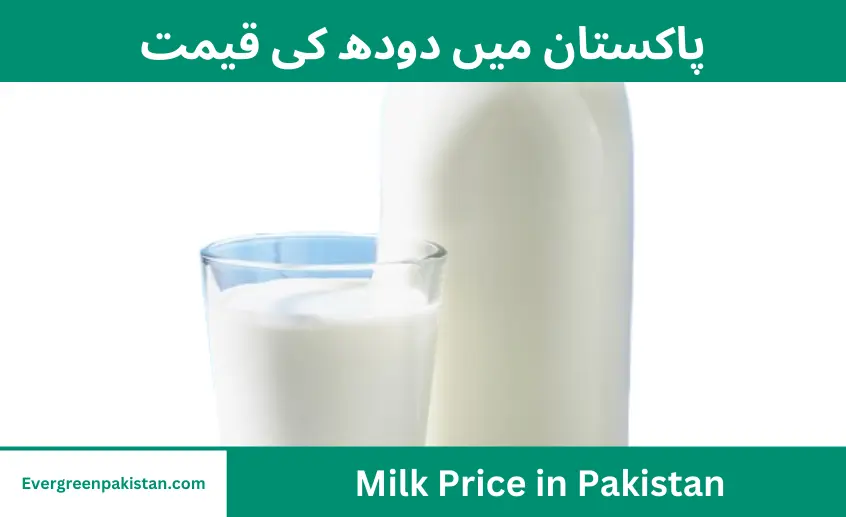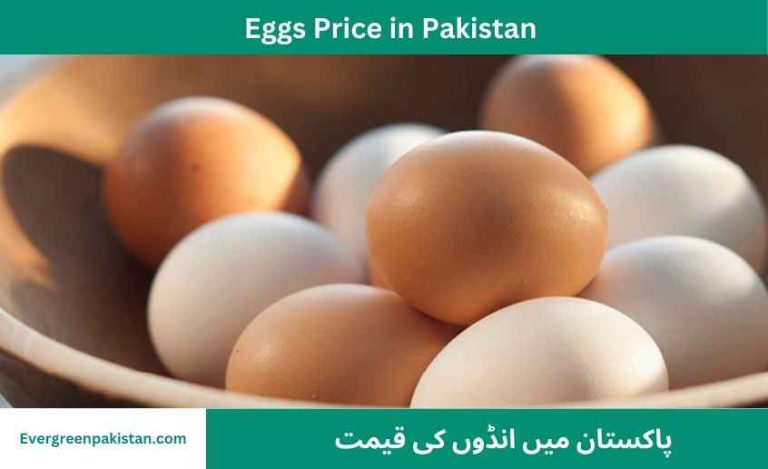Today Milk Prices in Pakistan
Pakistan, being an agricultural country, holds a significant position in the global dairy industry. With a massive production of milk, it ranks among the top ten milk-producing countries globally. This article takes an in-depth look at the factors influencing milk prices in Pakistan and their potential impact on consumers and producers alike.
Introduction
Milk is a staple food in Pakistan, accounting for nearly 10% of the average household’s monthly expenditure. It is consumed in various forms, including fresh, powdered, and processed dairy products, such as cheese, yogurt, and butter. The milk market is diverse, with both large-scale and small-scale producers contributing to the supply. As of May, 2024, Pakistan produced an estimated 75.1 million metric tons of milk annually.
Factors Affecting Milk Prices
Several factors influence the milk prices in Pakistan, including production costs, supply and demand dynamics, government policies, and global market trends. Here, we’ll discuss some of the critical factors affecting milk prices in the country.
1. Production Costs
The cost of milk production is directly proportional to the prices at which it is sold in the market. Some of the significant components of production costs include:
- Feed: The price of cattle feed primarily depends on the availability and cost of raw materials, such as grains and oilseeds. Seasonal fluctuations, crop yield, and import/export policies can also impact feed prices.
- Labor: The cost of labor in the dairy industry includes wages for workers involved in cattle rearing, milking, and transportation.
- Energy: Electricity, fuel, and other forms of energy used in the production process also contribute to the overall cost of milk production.
2. Supply and Demand
The supply and demand of milk in Pakistan vary depending on factors such as population growth, urbanization, and consumer preferences. Seasonal fluctuations can also impact milk production, leading to price fluctuations. During the summer months, milk production tends to be lower due to reduced fodder availability and heat stress on cattle, which may result in higher prices.
3. Government Policies
Government policies play a crucial role in shaping the dairy industry and, consequently, milk prices. Some of the policy-related factors affecting milk prices in Pakistan include:
- Price regulation: The government sets minimum and maximum prices for milk to protect both consumers and producers. However, inadequate enforcement often results in price violations.
- Import/export policies: Government policies regarding the import and export of dairy products can influence milk prices by affecting the overall supply and demand within the country.
- Subsidies: The government provides subsidies on various inputs such as cattle feed, electricity, and machinery used in the dairy industry, which can help reduce production costs and stabilize milk prices.
4. Global Market Trends
Pakistan’s dairy industry is interconnected with the global market, and international trends can impact milk prices domestically. Factors such as global production levels, changes in consumer demand, trade policies, and international commodity prices can influence milk prices in Pakistan.
Challenges and Opportunities
The dairy industry in Pakistan faces various challenges, which can impact milk prices and the overall sector’s growth. Some of these challenges include:
- Lack of cold chain infrastructure: The absence of proper cold chain infrastructure results in significant milk wastage and compromises quality. This issue ultimately affects pricing and consumer satisfaction.
- Informal milk market: A large portion of the milk market in Pakistan is unorganized, with many small-scale producers selling milk directly to consumers. This informality makes it difficult to enforce quality standards and price regulations.
- Limited access to credit: Small-scale dairy farmers often faces challenges in accessing credit, which can constrain their ability to invest in better technology and improve production efficiency.
Despite these challenges, the dairy industry in Pakistan has the potential to grow and provide better income opportunities for farmers, as well as more affordable and high-quality milk products for consumers. Some of the opportunities for growth and improvement include:
- Investment in cold chain infrastructure: Developing a robust cold chain infrastructure can help reduce milk wastage, ensure better quality, and stabilize prices.
- Modernization of the dairy sector: Adopting modern technology and best practices can help improve production efficiency, resulting in lower costs and more competitive milk prices.
- Expansion of the organized dairy market: Encouraging the growth of the formal dairy market can help enforce quality standards and price regulations, benefiting both consumers and producers.
Products Made With Milk
Dairy products like cheese, butter, yogurt, and ice cream are some of the most common foods made from milk. Cheese comes in many varieties like mozzarella, cheddar, and cottage cheese. Butter is made by churning cream. Yogurt provides probiotics from the fermentation of milk. And who doesn’t love a cold, creamy bowl of ice cream on a hot day? Milk is a versatile ingredient used in both sweet and savory foods.
Types of Milk in Pakistan
In Pakistan, the most common types of milk are cow, buffalo, goat, camel, and packaged milk. Cow and buffalo milk have a white color while goat and camel milk is a bit creamier. Packaged milk is usually pasteurized cow or buffalo milk sold under brand names. Raw milk direct from the animal is also common. The fat percentage and nutritional content varies between types.
Milk Brands in Pakistan
Leading milk brands in Pakistan include Nestlé Milkpak, Haleeb, Olper’s, Nurpur, and Anhaar. Milkpak offers full cream and skimmed cow milk in plastic pouches and tetra packs. Haleeb also has full cream and skimmed milk along with flavored options like mango and chocolate. Both cater to mass market consumers. Premium brands like Nurpur and Anhaar focus on farm-fresh, unprocessed milk delivered in glass bottles.
| Milk Brands | Quantity | Price(Single Pack) |
|---|---|---|
| Nestle Milk Pack Full Cream Milk Price in Pakistan | 1L | Rs. 280 |
| Dayfresh Pasteurized Full Cream Milk Price in Pakistan | 1L | Rs. 300 |
| Olpers Full Cream Milk Price in Pakistan | 1L | Rs. 255 |
| Nurpur Original Price in Pakistan | 1000 ML | Rs. 255 |
| Nurpur UHTMilk Price in Pakistan | 1L | Rs. 222 |
| Haleeb Premium All Purpose Milk Price in Pakistan | 1L | Rs. 260 |
| Nestle Nesvita Low Fat Milk Price in Pakistan | 1L | Rs. 300 |
| Olpers Flavoured Milk Price in Pakistan | 180 ML | Rs. 70 |
| Olpers Low Fat Milk Price in Pakistan | 1000 ML | Rs. 350 |
| Dayfresh Flavoured Milk Price in Pakistan | 225ml | Rs. 75-110 |
| Dayfresh Liquid Milk Full Cream Price in Pakistan | 1L | Rs. 240 |
| Olpers Milk Price in Pakistan | 1500 ml | Rs. 360 |
| Adams Milk Pasteurized Price in Pakistan | 1L | Rs. 190 |
| Good Milk Full Cream Price in Pakistan | 1L | Rs. 260 |
| Comellee condensed milk Price in Pakistan | 397 Gm | Rs. 549 |
| Prema Whole Milk Price in Pakistan | 1L | Rs. 280 |
| Doce Milk Price in Pakistan | – | – |
| Gourmet Milk (Pasteurized) Price in Pakistan | 1L | Rs. 150 |
| Gourmet Skim Milk Price in Pakistan | 400 G | Rs. 400 |
| Nutrivo Milk Price in Pakistan | 1L | Rs. 180 |
| Achha Pasteurized Milk Price in Pakistan | 1L | Rs. 180 |
| Malmo Milk Price in Pakistan | – | – |
| Anhaar Daily Dairy Milk Price in Pakistan | 1L | Rs. 190 |
| Dairy Omung Low Fat Milk Price in Pakistan | 1L | Rs. 190 |
| Dairy Pure Milk Price in Pakistan | 1L | Rs. 220 |
Note: While writing this article these are the exact prices for different milk brands. Prices may be changed later.Milk Price in Pakistan
The average price of milk in Pakistan varies by brand, source, and quantity purchased. Here are current price ranges:
Raw milk from dairy farms: Rs 150-230 per liter
The prices fluctuate depending on season and demand throughout the year. Buying larger quantities usually offers savings over single-serve pouches or bottles. Supporting local dairy farmers provides high quality fresh milk at affordable rates for most Pakistani consumers.
Conclusion
Milk prices in Pakistan are influenced by a complex interplay of factors, including production costs, supply and demand dynamics, government policies, and global market trends. Addressing the challenges faced by the dairy industry and capitalizing on the opportunities for growth can help stabilize milk prices and ensure a sustainable future for this vital sector in Pakistan’s economy.


